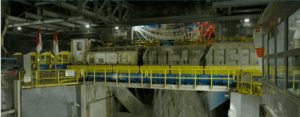How Traders Can Profit from Trump’s 50% Copper Tariff and Market Shock
What’s Driving Copper Prices Higher?
Trump’s action follows a still-unresolved Section 232 national-security investigation into copper, and while the official findings have yet to be released, the market is already reacting. Copper futures soared after the announcement, with traders rushing to front-run the August deadline by accelerating imports and stockpiling inventory. This frenzy has created a classic supply-demand dislocation that traders can exploit.
Copper is considered a bellwether for economic activity due to its extensive use in construction, semiconductors, batteries, and defense systems. While Trump framed the tariff as a move to rebuild American industrial dominance, critics argue that it could worsen inflationary pressures and supply chain disruptions in key sectors.
How Traders Can Benefit
- Trade Copper Futures and ETFs: Copper futures (HG contracts) on the CME and ETFs like the Global X Copper Miners ETF (COPX) or the United States Copper Index Fund (CPER) are experiencing increased volume. Traders can capitalize on breakout setups or fade overbought conditions with short-term scalps.
- Watch Mining Stocks: U.S.-based copper producers, such as Freeport-McMoRan (FCX), Southern Copper (SCCO), and Lundin Mining (LUNMF), are gaining attention. These companies may benefit from higher prices and the possibility of reshoring production, although permitting delays remain a bottleneck.
- Short Impacted Industries: Aerospace, electric vehicle, and heavy machinery manufacturers could face rising input costs. Traders may short vulnerable names or sectors temporarily exposed to copper price spikes.
- Volatility Strategies: The uncertainty surrounding international retaliation, potential exemptions, and long-term sourcing solutions fuels price swings. Options traders can capitalize on implied volatility in copper and mining stocks using straddles or strangles.
The Long-Term Outlook: Volatility Over Clarity
Although the White House cited national security and China’s dominance in copper refining as justifications, the reality is more complex. The U.S. imports most of its copper from allies such as Chile, Canada, and Mexico—all of which are under free-trade agreements. Building new domestic smelters or mines could take half a decade or more, meaning that higher copper prices are likely to remain in place for the near term.
From a trader’s perspective, that means elevated volatility, trending opportunities, and recurring headlines—fertile ground for short-term profits. However, traders should also be prepared for sudden reversals if legal challenges derail the tariffs or if diplomatic breakthroughs occur.
Conclusion
Whether or not the tariff leads to a “dominant U.S. copper industry,” one thing is clear: market chaos creates trading opportunities. With prices spiking and uncertainty high, traders who stay nimble and informed can turn Trump’s economic gamble into their next big win.
Key Takeaways:
- Trump’s 50% copper tariff takes effect August 1, sparking a supply scramble.
- Prices are surging as businesses rush to import before the deadline.
- Traders can capitalize via futures, ETFs, mining stocks, and options.
- Long-term clarity remains elusive—expect continued volatility.

